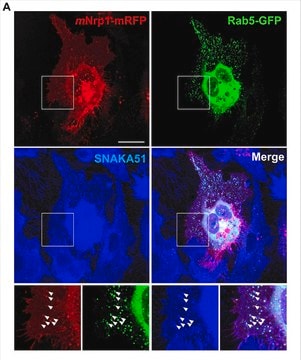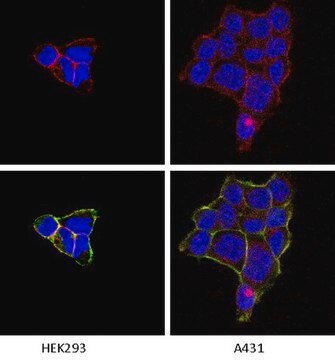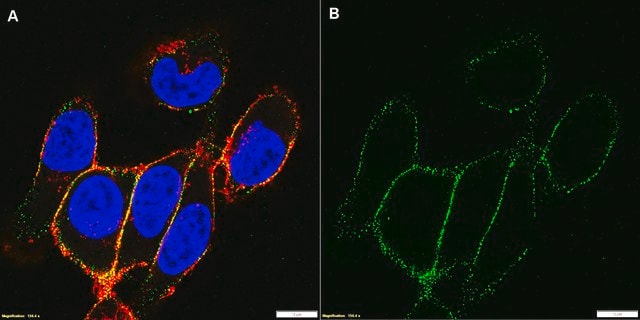MABT199
Anti-Integrin Beta1 Antibody, clone 8E3
clone 8E3, from mouse
Sinônimo(s):
Integrin beta-1, Fibronectin receptor subunit beta, VLA-4 subunit beta, CD29
About This Item
Produtos recomendados
fonte biológica
mouse
Nível de qualidade
forma do anticorpo
purified immunoglobulin
tipo de produto de anticorpo
primary antibodies
clone
8E3, monoclonal
reatividade de espécies
human
técnica(s)
activity assay: suitable
immunoprecipitation (IP): suitable
western blot: suitable
Isotipo
IgG1κ
nº de adesão NCBI
nº de adesão UniProt
Condições de expedição
wet ice
modificação pós-traducional do alvo
unmodified
Informações sobre genes
human ... ITGB1(3688)
Descrição geral
Especificidade
Imunogênio
Aplicação
Cell Structure
ECM Proteins
Activity Assay Analysis: A representative lot from an independent laboratory stimulated cellular adhesion and increased ligand binding activity of Integrin Beta1 (Mould, A. P., et al. (2004). J Biol Chem. 280(56):4238-4226.).
Immunoprecipitation Analysis: A representative lot from an independent laboratory immunoprecipitated Integrin Beta1 in IP (Tiwari, S., et al. (2011). J Cell Sci. 124(10):1672-1680.).
Qualidade
Western Blot Analysis: A 1:2,000 dilution of this antibody detected Integrin Beta1 in 10 µg of HT-1080 cell lysate.
Descrição-alvo
forma física
Armazenamento e estabilidade
Handling Recommendations: Upon receipt and prior to removing the cap, centrifuge the vial and gently mix the solution. Aliquot into microcentrifuge tubes and store at -20°C. Avoid repeated freeze/thaw cycles, which may damage IgG and affect product performance.
Nota de análise
HT-1080 cell lysate
Outras notas
Exoneração de responsabilidade
Not finding the right product?
Try our Ferramenta de seleção de produtos.
recomendado
Código de classe de armazenamento
12 - Non Combustible Liquids
Classe de risco de água (WGK)
WGK 2
Ponto de fulgor (°F)
Not applicable
Ponto de fulgor (°C)
Not applicable
Certificados de análise (COA)
Busque Certificados de análise (COA) digitando o Número do Lote do produto. Os números de lote e remessa podem ser encontrados no rótulo de um produto após a palavra “Lot” ou “Batch”.
Já possui este produto?
Encontre a documentação dos produtos que você adquiriu recentemente na biblioteca de documentos.
Nossa equipe de cientistas tem experiência em todas as áreas de pesquisa, incluindo Life Sciences, ciência de materiais, síntese química, cromatografia, química analítica e muitas outras.
Entre em contato com a assistência técnica








